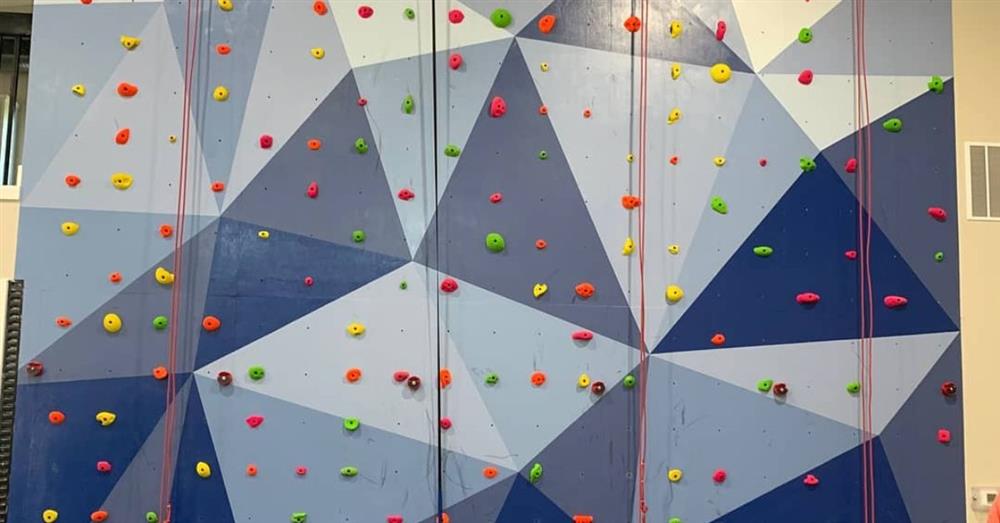When it comes to rock climbing, every hold matters. The pinch hold, often revered for its ability to test both strength and technique, is no exception.
Whether you're a climbing enthusiast setting up a home wall or a gym owner looking to provide the best experience for your members, understanding how to set up pinch holds is crucial. Below, we'll explain to rock climbers, hold installers, and climbing wall designers the mistakes to avoid when setting up a climbing pinch hold and the best practices to avoid errors.
What Are Pinch Holds?
Before we get into their installation, what are pinch holds? Pinches are a staple in the climbing world and require climbers to grip using their thumb and fingers, engaging the entire hand and often demanding significant finger strength.
Their effectiveness and safety are directly tied to how well they're set up. A poorly installed pinch hold can not only diminish the climbing experience but also pose serious risks to climbers.
Common Mistakes in Pinch Hold Installation
Understanding the intricacies of pinch hold installation can make a world of difference. From selecting the right materials to ensuring proper weight distribution, let's explore the avoidable mistakes and best practices when setting up a climbing pinch hold to make your climbing routes top-notch.
Using Improper Materials for Pinch Holds
One of the most frequent errors is choosing the wrong materials for rock climbing pinch holds. While it might be tempting to cut costs by using cheaper materials, this can lead to holds that wear out quickly or, worse, break during use.
High-quality resin or polyurethane are industry standards for their durability and grip. Investing in proper materials ensures that your pinch holds will withstand rigorous use, providing a reliable and safe climbing experience.
Underestimating Weight Distribution and Angles
Another common mistake is not considering the weight distribution and angles when setting up pinch holds. Pinch holds are unique in that they require a precise angle to be effective. If the angle is too steep or too shallow, climbers might find them either too easy or impossibly hard.
Additionally, improper weight distribution can lead to holds loosening over time, which can be dangerous. It's essential to understand the biomechanics of climbing and position the holds to mimic natural pinch movements.
Neglecting Regular Maintenance of Pinch Holds
Maintenance often falls by the wayside once holds are set up. However, regular checks are vital to ensure the longevity and safety of your pinch holds.
Over time, holds can shift, bolts can loosen, and wear and tear can make them less effective. Implementing a regular maintenance schedule can help catch these issues early, ensuring that the holds remain secure and functional.

The Costs of Hold Installation Mistakes
Potential Risk to Climbers' Safety
The most significant impact of improper pinch hold installation is the risk to climbers' safety. Loose or poorly angled holds can lead to slips and falls, which can cause serious injuries. Safety should always be the top priority when setting up climbing routes and avoiding these common mistakes is the first step in creating a safe environment.
Shortening the Life Span of Holds
Using the wrong materials or neglecting maintenance can significantly shorten the life span of your pinch holds. High-quality holds are an investment, and proper care can ensure they last for years. Conversely, cutting corners can lead to frequent replacements, which can be costly and time consuming.
Hindering Climbing Routes and Experiences
Poorly set-up pinch holds can hinder the overall climbing experience. If holds are too easy or too challenging because of incorrect angles, it can frustrate climbers and detract from the enjoyment of the route. Properly installed pinch holds can enhance the challenge and satisfaction of climbing, making routes more engaging and rewarding.
Best Practices for Installing Pinch Holds
Selecting the Right Materials for Pinch Holds
Choosing the right materials is the foundation of a good pinch hold setup. High-quality resin or polyurethane offers the best combination of durability and grip.
These materials are specifically designed to withstand the stresses of climbing, providing a reliable hold that won't degrade quickly. Ensure that the holds you purchase come from reputable manufacturers known for their quality and safety standards, such as Atomik Climbing Holds.
Understanding Proper Installation Techniques
Proper installation techniques are crucial for the effectiveness and safety of pinch holds. Start by ensuring that the surface you're attaching the holds to is stable and secure.
For wooden walls, use proper backing plates to distribute the load and prevent the wood from splitting. When positioning the holds, pay attention to the angles. The ideal angle for a pinch hold is typically around 45 degrees, but this can vary depending on the specific hold and the intended difficulty of the route. Use a level and angle finder to ensure accuracy.
Implementing Regular Inspection and Maintenance Schedules
Regular inspection and maintenance are key to the longevity and safety of your pinch holds. Schedule monthly checks to ensure that all holds are secure and free from damage.
Tighten any loose bolts and replace holds that show signs of significant wear. Clean the holds regularly to maintain their grip. Use a soft brush to remove chalk and dirt buildup, which can reduce friction and make the holds slippery.

Other Mistakes To Avoid While Setting Up an Indoor Climbing Wall
When setting up a rock climbing wall and other holds besides pinches, designers and installers should watch out for other errors such as overcrowding, neglecting all skill levels, and disregarding safety.
Overcrowding the Wall With Holds
While it can be tempting to squeeze as many holds into the wall as possible, you don't want to overcrowd your vertical space. It might seem like more holds equals more routes, but this can lead to a cluttered and confusing layout. Instead, focus on creating clear, distinct routes that offer a variety of challenges.
Not Considering Skill Levels
Another mistake is neglecting to consider the needs of different skill levels. Ensure that your wall has a mix of easy, intermediate, and advanced routes to cater to all climbers. This not only makes the wall more versatile but also encourages climbers to progress and improve their skills.
Overlooking Safety Equipment
Finally, don't overlook the importance of safety equipment. Proper padding and crash mats are essential to protect climbers from falls. Ensure that mats cover all potential fall zones and are thick enough to absorb impact.
Find Pinch Holds and More at Atomik Climbing Holds
Setting up pinch holds may seem straightforward, but avoiding common mistakes and adhering to best practices can make a significant difference in the safety and enjoyment of your climbing routes. We hope our guide helps you avoid the common errors that trip up many others when installing and designing a rock wall.
If you need pinches or any other type of holds for your rock climbing wall, consider Atomik Climbing Holds. Our huge inventory has every hold a climbing wall needs, including slopers, jugs, footholds, crimpers, and more, which are available as bolt-ons and screw-ons. View our selection and equip your rock wall today!




Leave your comment